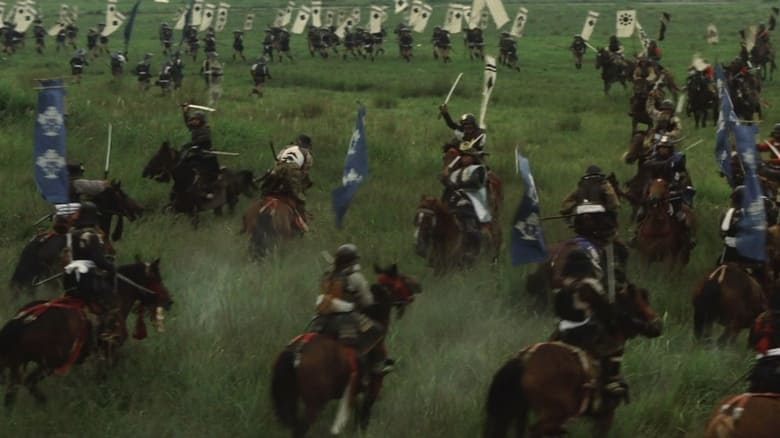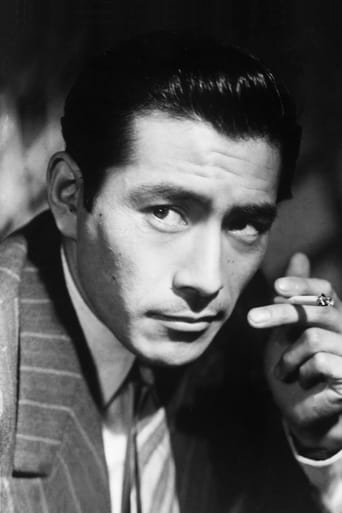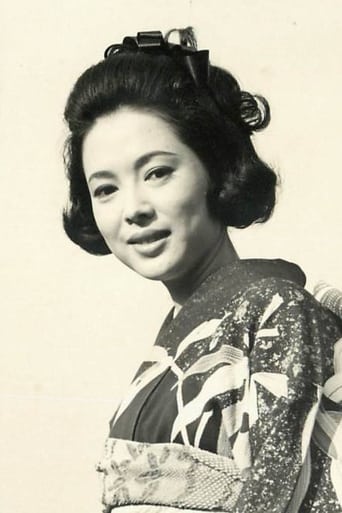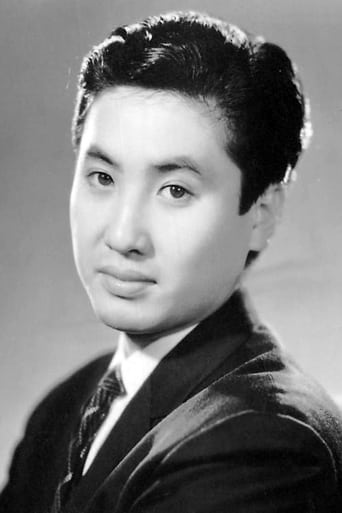

Samurai Banners (1969)
Kansuke Yamamoto is a samurai who dreams of a country united, peaceful from sea to sea. He enters the service of Takeda, the lord of Kai domain. He convinces Takeda to kill the lord of neighboring Suwa and take his wife as a concubine. He then convinces the widow, Princess Yu, to accept this arrangement and to bear Takeda a son. He pledges them his life. He then spends years using treachery, poetic sensibility, military and political strategy to expand Takeda's realm, advance the claim of Yu's son as the heir, and prepare for an ultimate battle with the forces of Echigo. Has Kansuke overreached? Are his dreams, blinded by love, too big?
Watch Trailer
Cast


Reviews
good back-story, and good acting
A lot of fun.
Entertaining from beginning to end, it maintains the spirit of the franchise while establishing it's own seal with a fun cast
It's funny, it's tense, it features two great performances from two actors and the director expertly creates a web of odd tension where you actually don't know what is happening for the majority of the run time.
Samurai Banners (1969) is Hiroshi Inagaki's, know for The Samurai: Musashi Miyamoto trilogy, crowning achievement-a nearly three hour historically based epic starring Toshiro Mifune as a ronin determined to achieve greatness in his new clan by uniting Japan under one ruler. The story is based on a novel adapted by Shinobu Hashimoto (Rashomon and Seven Samurai) and takes place in the Sengoku warring period 1500-1600. At the time it was the most expensive Japanese film produced with several massive fight scenes that must have been expensive to stage. It immediately calls to mind Akira Kurosawa's two late samurai epic masterpieces Kagemusha and Ran. I wonder why he wasn't involved in the project that was made with his former leading man and the script writer of his greatest triumphs. Nonetheless, Inagaki with cinematographer Kazuo Yamada has created a stylish, colorful, and dynamic film.
A large scale production based on history, this film resembles the later samurai dramas produced for Japanese TV in that a reasonable familiarity with Japanese history would help with the overall understanding of the project. Mifune plays Kansuke Yamamoto, a ronin with a strong dream of uniting a large part of Japan under one banner. He manages to get hired by a vassal of powerful clan leader Shingen Takeda by betraying a fellow ronin and killing him. Kanasuke quickly rises to the position of main adviser to Takeda as he manipulates Takeda's plans for conquest. The battles go well and along the way Kansuke captures a princess who becomes Takeda's concubine and bears Takeda a son. Kansuke shows a paternal concern for the child and vows to give him a vast realm to lord over.Inagaki, who was at the tail end of a very long directorial career, creates a detailed recreation of the times especially the armies of the various warring clans. The direction is assured and while old fashioned at times he engages in some very interesting directorial techniques. The photography is very good and the composition of some of the scenes is excellent. All the actors are great although Mifune gets overly theatrical occasionally. There are hundreds of banners in the film and Kansuke seems to be obsessed with his clan's banner. If this is of historical significance, the film doesn't explain it. The massive battle scenes are vaguely similar to the scenes in Kurosawa's Ran made a number of years later. There's lots of horses and people running to and fro. The actual combat scenes are good but not special.A very long film at 2 hours and 45 minutes, it managed to hold my interest due to the talent involved but it is an effort to get through. There are a couple of talky scenes and the ending, while possibly accurate, isn't the best. It's as if the film lost it's steam with ten minutes to go. Also the opening set piece with Kansuke betraying the other ronin sets up a dark character that is never really explored again. He's a haunted man obsessed with his dream of unifying Japan but the cold-hearted murderer we are first shown never comes back.Recommended for samurai films buffs, Mifune fans and people who like long historical dramas. If you are looking for a classic chambara with a simple story and strong quirky characters, this probably isn't the best.
Lots of attention to historical detail, like the horned kabuto worn by Yamamoto Kansuke. Climactic battle (4th Kawanakajima)between the Takeda and Uesugi well worth seeing. Story told from the viewpoints of Kansuke and his overlord, Takeda Shingen. I liked this a lot more than the 1990 "Heaven and Hell," which retold the story of the rivalry between Takeda Shingen and Uesugi Kenshin, but from Kenshin's viewpoint. For example, the later movie seemed less accurate and more artsy (each side's soldiers all wore the same standard-color sashimono)in its depiction of the same battle.
One of the best samurai epics. "Furinkazan" tells the story of the 16th century warlord Takeda Shingen and his loyal general Yamamoto Kansuke (Mifune Toshiro) embedded in the story of the Takeda clan's rise to power. Outstanding sets, costumes and Sato Masaru's rich soundtrack make the drama highly enjoyable.




